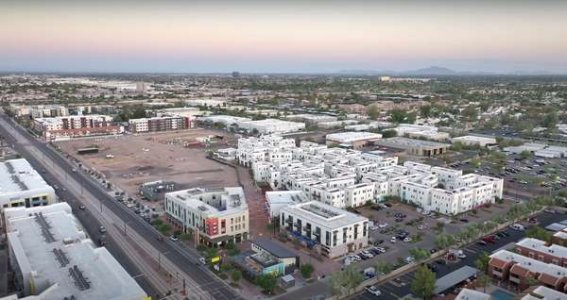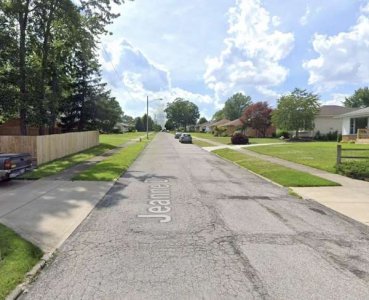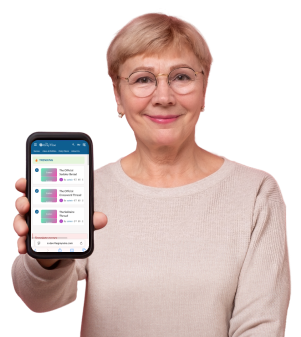Ditch the car, keep the comfort: Why families are loving this car-free community
- Replies 0
Imagine a neighborhood where streets belong to people, not traffic. Where conversations replace honking horns, and fresh air isn't something you have to drive to find.
It may sound like a vision from the past—but for residents of Culdesac Tempe, it’s the reality of today.
Built intentionally without parking lots or personal vehicles, it’s designed around walkability, shade, and connection.

And in a state known for sprawling highways and triple-digit temps, it’s flipping expectations upside down.
The design is smart, practical, and surprisingly social.
The white stucco buildings reflect heat, narrow walkways promote breezes, and dozens of courtyards encourage neighbors to linger, chat, and unwind together.
Residents can walk to everything they need—or hop on a free light rail, electric scooter, or even borrow a relative’s car when needed.
They rely on free transit passes for longer trips and occasionally borrow a car for errands.
“We do really, really love it here,” Rouhani told The New York Times. “It’s the best place I’ve ever lived.”
And they’re not alone. Culdesac has already leased nearly 90% of its 288 units, with 450 more on the way.
Rent ranges from $1,300 to $2,800, depending on unit size—competitive pricing for Tempe and well worth it for those drawn to this simpler, slower lifestyle.
For resident Electra Hug, who is blind, Culdesac has offered something few communities can: freedom and safety.
“It’s just super unique and really just homey,” she says. “In order to have a good time or have fun, I do not have to cross the street.”
Neighbors help each other. Strangers become friends.
One family described how, after their daughter was born, three different neighbors brought them meals and groceries—no car required.
Experts like Edward Erfurt of Strong Towns see it as a blueprint for reducing loneliness, shortening commutes, and rethinking how we design neighborhoods.
“We could do all that simply by decoupling parking from development,” Erfurt says.
And Culdesac didn’t just dream big—they rewrote the rules.
With an exemption from traditional parking requirements, the development proved you can build a vibrant, livable community that thrives without cars—even in the Arizona heat.
 Could you live car-free in your neighborhood? What would you need to make it work? Is this the kind of community you’ve been looking for—or one you didn’t realize you needed? Let’s talk about what it really means to live well, walk more, and drive less.
Could you live car-free in your neighborhood? What would you need to make it work? Is this the kind of community you’ve been looking for—or one you didn’t realize you needed? Let’s talk about what it really means to live well, walk more, and drive less.
Read more:
It may sound like a vision from the past—but for residents of Culdesac Tempe, it’s the reality of today.
A community built for people—not cars
Just 11 miles from downtown Phoenix, Culdesac is being called the first car-free neighborhood of its kind in the US.Built intentionally without parking lots or personal vehicles, it’s designed around walkability, shade, and connection.

Culdesac, the first town in the United States designed to be car-free. Image source: Culdesac / YouTube
And in a state known for sprawling highways and triple-digit temps, it’s flipping expectations upside down.
The design is smart, practical, and surprisingly social.
The white stucco buildings reflect heat, narrow walkways promote breezes, and dozens of courtyards encourage neighbors to linger, chat, and unwind together.
Residents can walk to everything they need—or hop on a free light rail, electric scooter, or even borrow a relative’s car when needed.
Real families, real benefits
People like Andre Rouhani and Gabriela Reyes, who live here with their two young children, say giving up their personal vehicle hasn’t been a burden—it’s been a blessing.They rely on free transit passes for longer trips and occasionally borrow a car for errands.
“We do really, really love it here,” Rouhani told The New York Times. “It’s the best place I’ve ever lived.”
And they’re not alone. Culdesac has already leased nearly 90% of its 288 units, with 450 more on the way.
Rent ranges from $1,300 to $2,800, depending on unit size—competitive pricing for Tempe and well worth it for those drawn to this simpler, slower lifestyle.
A place that empowers all walks of life
For resident Electra Hug, who is blind, Culdesac has offered something few communities can: freedom and safety.
“It’s just super unique and really just homey,” she says. “In order to have a good time or have fun, I do not have to cross the street.”
Neighbors help each other. Strangers become friends.
One family described how, after their daughter was born, three different neighbors brought them meals and groceries—no car required.
Could this be the future of urban living?
Culdesac’s success is inspiring urban planners and developers across the country.Experts like Edward Erfurt of Strong Towns see it as a blueprint for reducing loneliness, shortening commutes, and rethinking how we design neighborhoods.
“We could do all that simply by decoupling parking from development,” Erfurt says.
And Culdesac didn’t just dream big—they rewrote the rules.
With an exemption from traditional parking requirements, the development proved you can build a vibrant, livable community that thrives without cars—even in the Arizona heat.
Key Takeaways
- Culdesac, a development in Tempe, Arizona, is the first town in the United States designed to be car-free, attracting renters who are embracing a walkable living model.
- The town offers amenities within walking distance, free electric scooters, local businesses, and unlimited free rides on the light rail system to nearby cities.
- Residents have shared positive experiences, citing the community's design which encourages socialisation and a slower pace of life due to the absence of cars.
- The success of Culdesac Tempe could inspire future developments that challenge traditional residential planning and address issues like loneliness and commute times.
Read more:







